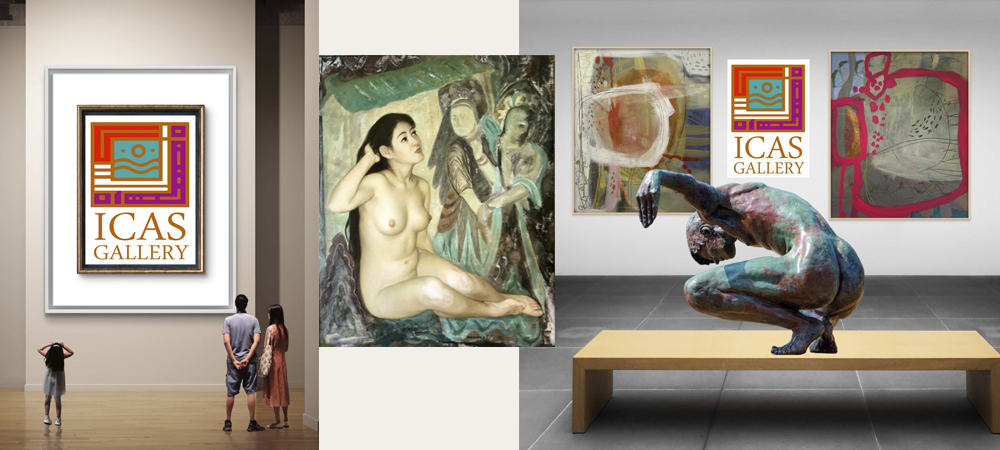
Artists across various mediums have long found inspiration in dance, including those who create nude art and sculpture. The movement, form, and expression inherent in dance have captivated creators throughout history. As a result, countless artworks celebrate the human body in motion.
Building upon this inspiration, one of the earliest known bronze sculptures of the dancing Shiva dates back to the Chola dynasty in South India, around the 10th century CE.

Also known as Nataraja, the Dancing Shiva is a popular representation of the Hindu deity Shiva. In this divine form, Shiva symbolises the cosmic cycles of creation, preservation, and destruction. Dancing within a circle of flames, Shiva’s image reflects the eternal rhythm of the universe.
As artistic traditions evolved across time and cultures, dance continued to serve as a central theme and a dynamic narrative in nude art. Following ancient precedents, artists from classical depictions of mythological dancers to later contemporary interpretations of modern dance have utilised the medium to convey themes of grace, strength, and sensuality.
For instance, one of the earliest examples of dance-inspired nude art can be found in ancient Greek and Roman sculptures, such as the iconic Dancing Satyr statue and the marble figure of the Dancing Faun. These works celebrate the vitality and athleticism of the human body, reflecting the importance of dance in ancient cultures.
Transitioning to the Renaissance period, artists such as Michelangelo and Leonardo da Vinci continued to explore the human form through their paintings and sculptures. While not exclusively focused on dance, their works often depicted figures in dynamic poses reminiscent of dancers, showcasing the movement’s influence on art during this era.
Advancing further in art history, the 19th and 20th centuries saw artists such as Edgar Degas and Auguste Rodin become renowned for their depictions of dancers in paintings and sculptures. Degas, in particular, was captivated by ballet and often captured behind-the-scenes moments, portraying dancers in various states of rehearsal and performance, which reflected his deep appreciation for the art form.
In parallel, Rodin’s sculptures, such as “The Dance Movement,” showcase his expertise in conveying the energy and tension of the human body in mid-motion. His works showcase dancers in strikingly dynamic poses, meticulously rendered to convey a palpable sense of rhythm and vigour that captivates audiences.
In more contemporary times, this ongoing exploration is evident in the works of artists such as Isamu Noguchi and Antony Gormley, who have continued to examine the intersection of dance and sculpture. Noguchi’s “Bust of Martha Graham” pays homage to the legendary dancer and choreographer, capturing her spirit and grace in stone. Though abstract in form, Gormley’s “Quantum Cloud” series evokes the fluidity and movement of dance through its interconnected steel figures.


Reflecting this tradition in a modern context, the ICAS Gallery showcases a diverse range of artists who explore dance-inspired nude art and sculpture. Among these contemporary voices, Teresa Wells is noted for her precise, emotive bronze figures, and Katya Gridneva is recognised for painting dancers with expressive sensitivity. Teresa Wells’ “Eternal Beauty,” a limited edition series of 12 sculpted Nude Bronze Dancers, exemplifies her attention to anatomical detail and ability to convey motion. At the same time, Gridneva’s paintings highlight grace and nuance in human movement.

Katya Gridneva, another notable artist represented by ICAS Gallery, offers a poignant exploration of the balletic form in her work, “Ballerina Reflecting Pastel Study.” Through delicate pastel strokes, Gridneva captures the essence of the ballerina’s movement, evoking a sense of fluidity and lightness. Her study invites viewers to immerse themselves in dance, where every gesture and posture tells a story of dedication and grace. These works by Teresa Wells and Katya Gridneva exemplify the gallery’s commitment to showcasing contemporary interpretations of dance in nude art and sculpture. Through their masterful craftsmanship and artistic vision, these artists continue to enrich the dialogue surrounding the intersection of dance, beauty, and human expression.
We welcome enquiries for special commissions.
For all private or corporate commissions by our gallery artists,
please get in touch with Sunil Vilas by calling
VIDEOS
ICAS Dance Art
The history of the earliest form of Dance art traces back to Indian origins, the period of the Vedas, which dates back to around 1000 B.C., and the image of Shiva, the Lord of Dance.








